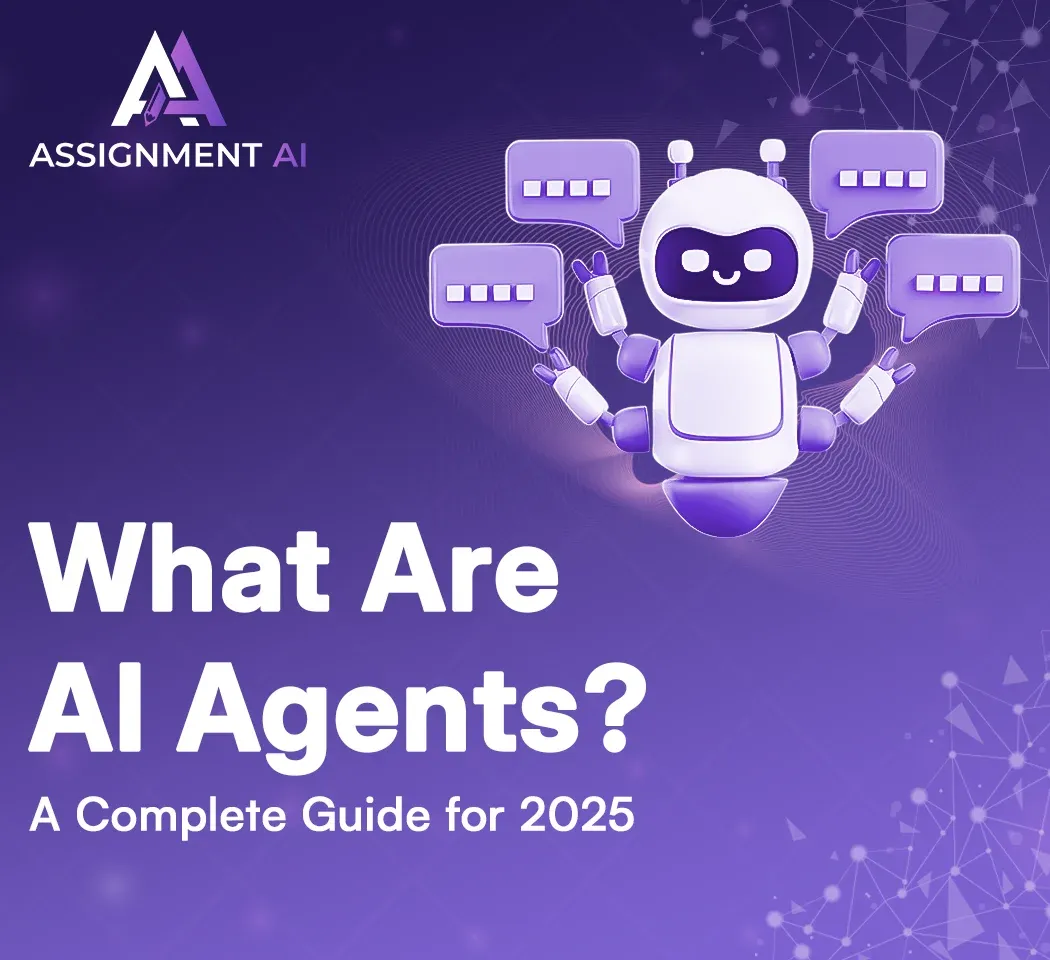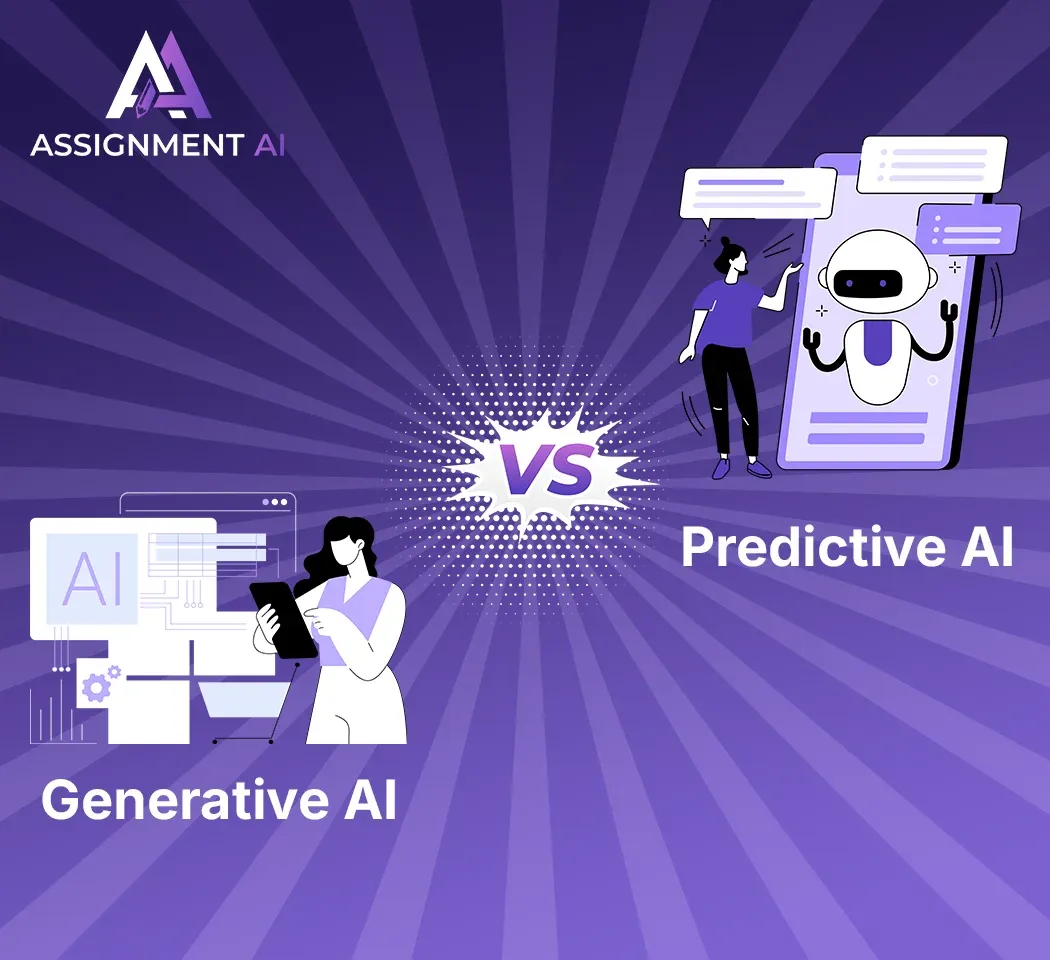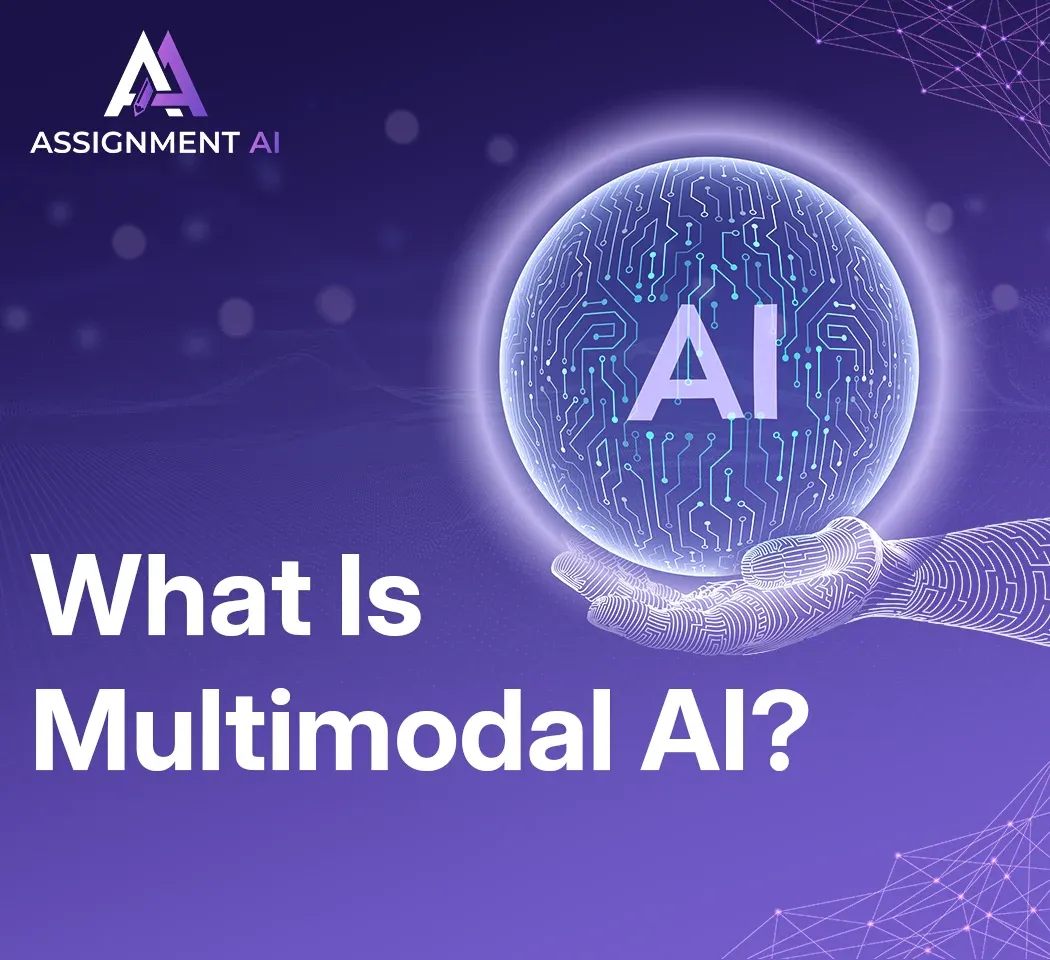AssignmentGPT Blogs
Alexa, Ok Google, Hey Siri...
Sounds familiar, doesn't it?
Have you ever thought of how Google is so perfect and accurate when you search for something, even though you make mistakes by chance when you type? Or how does Alexa manage to play your favorite song just by speaking? That is what Natural Language Processing (NLP) is. It's like teaching computers to understand and respond to human language.
Think that you are on a road trip with your friends, and everyone is hungry. Meanwhile, someone says, "Hey Siri, find a pizza outlet near me," and you get a list of pizza places available near you. In this case, Siri didn't just hear your words but actually understood the meaning of your words and implemented it by finding the pizza place. NLP helps in answering your questions and understanding emotions in reviews.
Quick summary
What is Natural Language Processing (NLP)?
NLP is a part of AI that allows machines to understand what humans want, analyze human demands and respond to human language. With natural language processing techniques, computers can understand and make sense of human conversations to provide useful information according to the instructions given. NLP is behind the tools/apps like Google Translate, email spam filters and even “suggested reply” in your Gmail inbox. Then the AI tools like Grammarly also include NLP for correcting grammar issues. Along with that there are tools like YouTube voice search and Search by images.
Let's check out how computers turn our words into actions. This blog is perfect for anyone who’s into tech or even curious about chatbots. Keep reading!
What is Natural Language Processing?
In basic terms, natural language processing is how we give commands or teach computers to understand and respond to human language. Remember, human language is full of subtle hints, slang and can be unclear and confusing at times. For example, a single word like "date" can mean some fruit, a romantic meeting or a point in time.
This complexity makes it challenging for machines to interpret what we mean. That’s where NLP techniques come in. These tools break down language into smaller, understandable parts like words, grammar and meaning. With these, machines can analyze text, recognize emotions and can even predict what you’ll type next!
Also read this article : ChatGPT vs. Microsoft Copilot vs. Gemini
Techniques of Natural Language Processing
There are several NLP methods techniques used to process and analyze text. Let’s cover the most popular ones.
1. Named Entity Recognition (NER)
NER is an NLP technique that identifies key elements in text. Among which are names of people, organizations, dates and locations. For example, if you type "John is moving to Paris," the NER tool will identify "John" as a person and "Paris" as a place. This helps businesses in obtaining useful info from data.
2. Text Summarization
Thought about being able to get a summary of a long article in seconds? All thanks to the text summarizer, by which NLP can do just that! This NLP technique gives the most accurate information from large blocks of text by making it easier to consume. Think of reading a quick summary of a 10-page report—how easy is that, right?
3. Sentiment Analysis
Sentiment analysis is like mood detection for text. This NLP method identifies if the text is positive, negative or neutral. For example, it may support brands in analyzing customer reviews to understand if people are happy or upset about their product.
4. Topic Modeling
Want to uncover the hidden themes in a bunch of documents? That’s where the topic of modeling shines. It is an unsupervised NLP technique which basically gets similar words and phrases together to analyze topics in a data source. This is used by researchers and marketers to analyze trends and patterns.
5. Stop Words Removal
Few words such as "the," "is" and "and" are not very important for the structure of sentences. Stop words removal removes these filler words and allows NLP models to pay attention to meaningful terms. For instance, removing stop words from "The cat is sleeping on the mat" leaves us with "cat sleeping mat."
6. Text Classification
Text classification is a method to group question data into categories. For example, the category of emails as "spam" or "not spam" can be classified. This NLP method technique is widely used in customer support to categorize queries or in news apps to group articles by topic.
7. Keyword Extraction
Keyword extraction can list out the most important words or phrases in a text. This NLP technique is like a highlighter for key points. For example, in a product review, it might pick out words like "battery life" or "camera quality," helping companies focus on user priorities.
8. Lemmatization and Stemming
Both of these techniques simplify words to their root form.
- Lemmatization: It turns words into dictionary form (e.g., "forming " becomes "form").
- Stemming: It removes prefixes or suffixes (e.g., "bonds" becomes "bond").
These processes make it easier for machines to analyze text.
9. Machine Translation
Ever used Google Translate? That’s machine translation at work. This NLP technique helps translate text between languages but does not change the meaning or context. It's very useful for companies in foreign markets.
10. TF-IDF
Term Frequency-Inverse Document Frequency (TF-IDF) is used to identify words that are primary in a document. This is a significant part of the search engine and the recommendation systems.
Read More : What is GPT-4 Turbo?
Applications of Natural Language Processing
NLP powers many incredible tools and technologies that shape how we interact with information. Let’s dive into some of its most impactful applications:
1. Machine Learning
NLP can perform very smooth translation of text from one language to another. For example, translators like Google or DeepL use machine translation to preserve the context of a text and tone while translating language. Companies use this to talk to other people around the world and it is a must-have technology for cross-cultural communication.
2. Information Retrieval
Information retrieval can seek and find exactly what you need. Search engines such as Google are equipped with NLP which enables them to break down your search queries and produce highly relevant results. Moreover, it is being applied to the enterprise in the document management systems which help the staff to get the data quickly.
3. Sentiment Analysis
Sentiment analysis is a method for evaluating text, which comes with sentences, phrases and words as well, and decides whether the emotion is positive, negative or neutral. This is a widely used tool in analyzing reviews from customers, social media mentions, feedback forms thus assisting companies to make the most accurate decisions.
4. Information Extraction
NLP tools can pull out key facts, entities or relationships from unstructured data. For example, extracting names, dates or addresses from legal documents is made easier with information extraction. It’s essential for industries like healthcare, where critical details must be pulled from complex records.
5. Question Answering
Ever asked Alexa or Siri a question and got an instant response? That’s a question I'm answering at work! NLP enables systems to analyze queries and provide precise answers. This application is also popular in search engines, customer support bots and even educational tools for interactive learning experiences.
Natural Language Processing Industries
- Healthcare: For medical record analysis and drug discovery.
- Finance: Risk assessment and fraud detection.
- Retail: Personalized recommendations and chat support.
- Education: Automating grading and creating interactive learning experiences.
Examples of Natural Language Processing
- Google Translate: Converts text between languages.
- Grammarly: Checks grammar and suggests improvements.
- Amazon Alexa: Listens to voice commands.
- Netflix Recommendations: Proposes shows according to user preferences.
Conclusion
NLP (Natural Language Processing) is the innovation that makes the processes between people and technology easy. One of the key factors for the success of computers is understanding human language and using this to our advantage. This can be translation of texts through sentiment analysis, question answering, or quick retrieval of information. Healthcare, finance, customer service, and many other industries are benefiting.
FAQs
1. What does NLP mean in Artificial Intelligence?
2. What are some key NLP techniques?
3. Where is NLP used?
4. What differentiates stemming and lemmatization?
Content writer at @AssignmentGPT
Kandarp’s world is powered by conversations, content, and creativity. With experience across branding, literature, publishing, and strategy, he has helped shape identities and stories for businesses across industries. At AssignmentGPT AI, he leads a team that blends sharp content, strong design, and local insight to turn businesses into brands that connect with people.
Master AI with
AssignmentGPT!
Get exclusive access to insider AI stories, tips and tricks. Sign up to the newsletter and be in the know!

Transform Your Studies with the Power of AssignmentGPT
Empower your academic pursuits with tools to enhance your learning speed and optimize your productivity, enabling you to excel in your studies with greater ease.
Start Your Free Trial ➤Start your success story with Assignment GPT! 🌟 Let's soar! 🚀
Step into the future of writing with our AI-powered platform. Start your free trial today and revolutionize your productivity, saving over 20 hours weekly.
Try For FREE ➤








